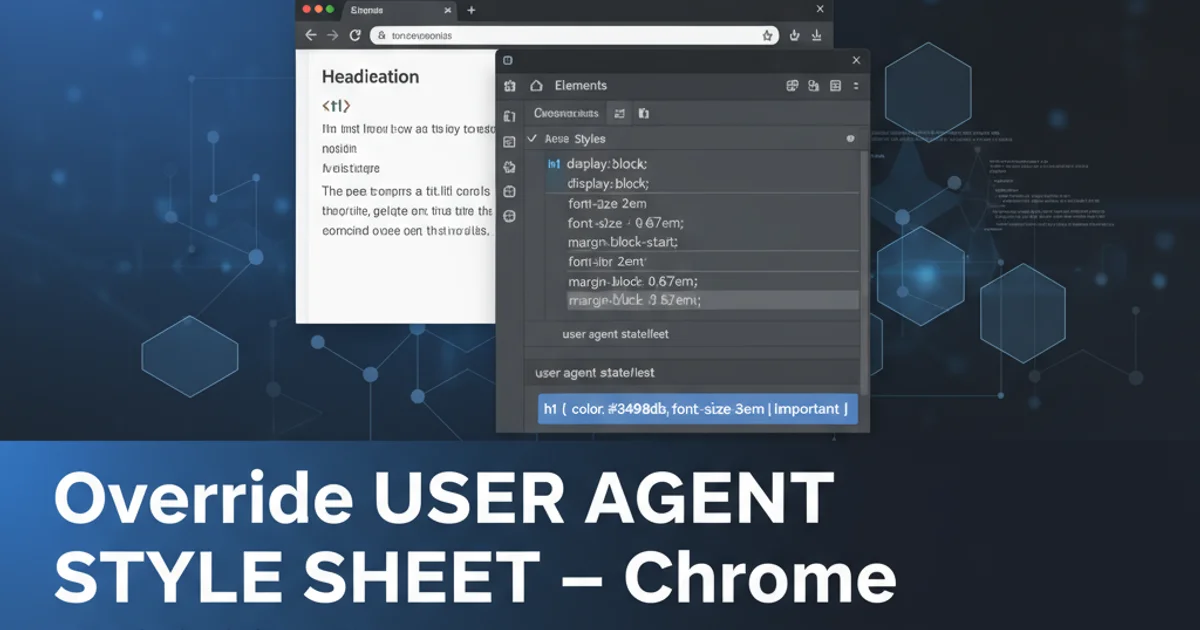Significance of a PATH explained
Categories:
The Significance of the PATH Environment Variable Explained

Understand what the PATH environment variable is, why it's crucial for executing commands and scripts, and how to manage it across different operating systems and programming languages.
Have you ever typed a command like python, java, or git into your terminal and wondered how your operating system (OS) knows where to find the actual executable file for that command? The answer lies in a fundamental concept called the PATH environment variable. This variable is a critical component of how your OS locates and runs programs, scripts, and utilities. Without a correctly configured PATH, you'd have to specify the full, absolute path to every executable you want to run, which would be incredibly cumbersome.
What is the PATH Environment Variable?
The PATH environment variable is a system-level or user-level variable that stores a list of directories. When you type a command in your shell (e.g., Bash, PowerShell, Command Prompt), the OS doesn't immediately know where the corresponding executable file is located. Instead, it consults the PATH variable. It searches through each directory listed in the PATH, in the order they appear, until it finds an executable file with a matching name. Once found, it executes that program. If the command is not found in any of the directories listed in the PATH, you'll typically receive an error message like "command not found" or "'command' is not recognized as an internal or external command."
flowchart TD
A[User types command] --> B{Is command an alias or built-in?}
B -->|No| C[OS checks PATH variable]
C --> D{Search each directory in PATH (order matters)}
D -->|Executable found| E[Execute program]
D -->|No executable found after all directories| F["Error: Command not found"]
B -->|Yes| EHow the OS uses the PATH variable to locate and execute commands.
Why is PATH Important for Developers?
For developers, a well-configured PATH is indispensable. It allows you to run compilers, interpreters, build tools, version control systems, and various utilities from any directory in your terminal without needing to navigate to their installation locations. This significantly improves workflow efficiency. For instance, if you install Python, its executable (python.exe on Windows, python on Linux/macOS) needs to be in a directory listed in your PATH for you to simply type python to invoke the interpreter. The same applies to Java's javac and java commands, C#'s dotnet CLI, and many other development tools.
Managing the PATH Variable Across Operating Systems
The method for viewing and modifying the PATH variable differs slightly between operating systems. Understanding these differences is crucial for effective development environment setup.
Windows
On Windows, the PATH variable is typically managed through the System Properties dialog or via the command line. Paths are separated by semicolons (;).
Viewing PATH:
echo %PATH%
Temporarily adding to PATH (current session only):
set PATH=%PATH%;C:\My\New\Path
Permanently adding to PATH (via GUI):
- Search for "Environment Variables" in the Start menu.
- Click "Edit the system environment variables."
- In the System Properties dialog, click "Environment Variables..."
- Under "System variables" or "User variables for [YourUser]", find the
Pathvariable and click "Edit...". - Add your new path, ensuring each entry is on a new line or separated by a semicolon.
Linux/macOS
On Unix-like systems (Linux, macOS), paths are separated by colons (:). The PATH is usually set in shell configuration files like .bashrc, .zshrc, .profile, or .bash_profile.
Viewing PATH:
echo $PATH
Temporarily adding to PATH (current session only):
export PATH="/usr/local/bin:$PATH"
Permanently adding to PATH (e.g., in .bashrc):
- Open your shell's configuration file (e.g.,
~/.bashrcor~/.zshrc) in a text editor. - Add the line
export PATH="/path/to/your/tool:$PATH"(orexport PATH="$PATH:/path/to/your/tool"if you prefer appending). - Save the file.
- Apply the changes by running
source ~/.bashrc(or your respective config file) or by opening a new terminal session.
PATH in Programming Languages (C#, Java, Python)
While the PATH variable is an OS concept, its impact is deeply felt within programming language ecosystems. Each language relies on it to locate its runtime, compilers, and associated tools.
Java: For Java development, the JAVA_HOME environment variable often points to the JDK installation directory. However, the bin subdirectory of JAVA_HOME (e.g., C:\Program Files\Java\jdk-17\bin or /usr/lib/jvm/java-17-openjdk/bin) must be included in your system's PATH for commands like java and javac to be recognized globally.
export JAVA_HOME=/usr/lib/jvm/java-17-openjdk
export PATH=$JAVA_HOME/bin:$PATH
Example of setting JAVA_HOME and adding it to PATH on Linux/macOS.
Python: When you install Python, its executable and associated scripts (like pip) are placed in a specific directory. This directory (e.g., C:\Python39\Scripts and C:\Python39 on Windows, or /usr/local/bin on Linux/macOS) needs to be in your PATH. Virtual environments, like venv or conda, create their own bin (or Scripts) directories and modify your shell's PATH temporarily to prioritize their executables when activated.
# Example of activating a Python virtual environment
# On Linux/macOS:
source myenv/bin/activate
# On Windows (Command Prompt):
myenv\Scripts\activate.bat
# After activation, 'python' and 'pip' will refer to the virtual env's versions
import os
print(os.environ.get('PATH'))
Activating a Python virtual environment and checking the modified PATH.
C# (.NET): The .NET SDK includes the dotnet command-line interface (CLI). When you install the .NET SDK, the installer typically adds the SDK's tools directory (e.g., C:\Program Files\dotnet or /usr/share/dotnet) to your system's PATH. This allows you to run dotnet new, dotnet build, dotnet run, etc., from any terminal location.
# Example of checking dotnet CLI version, which relies on PATH
dotnet --version
Verifying .NET CLI installation via the PATH variable.